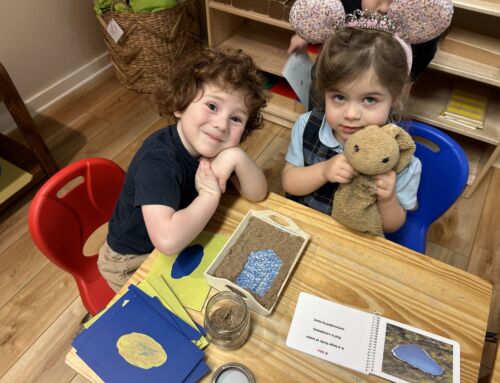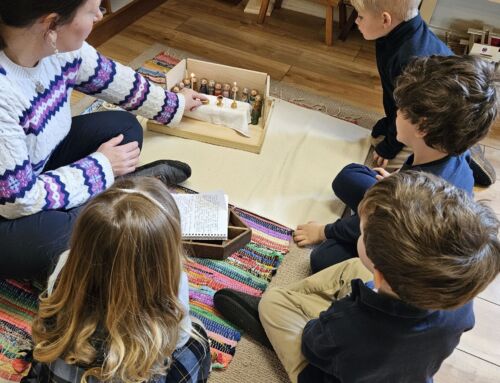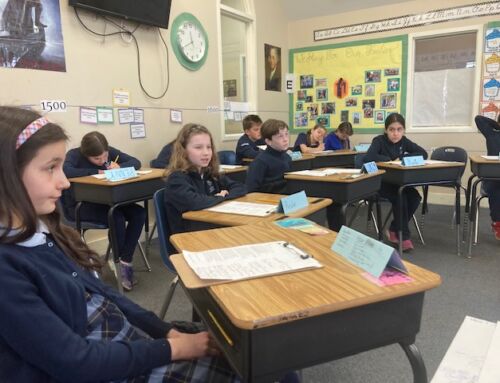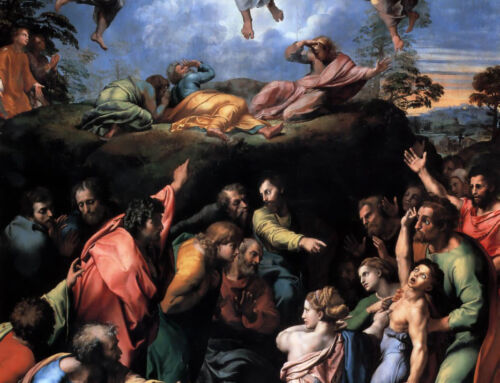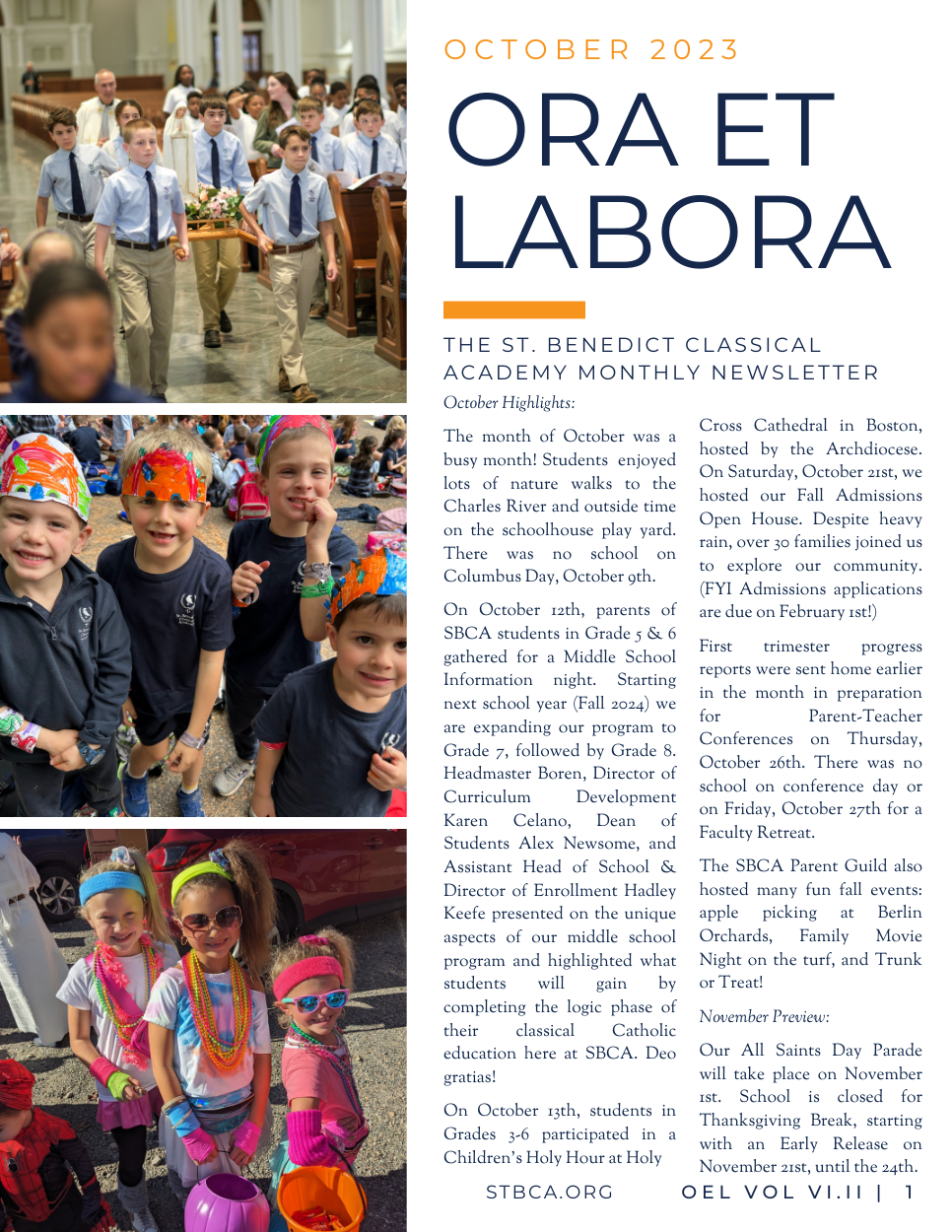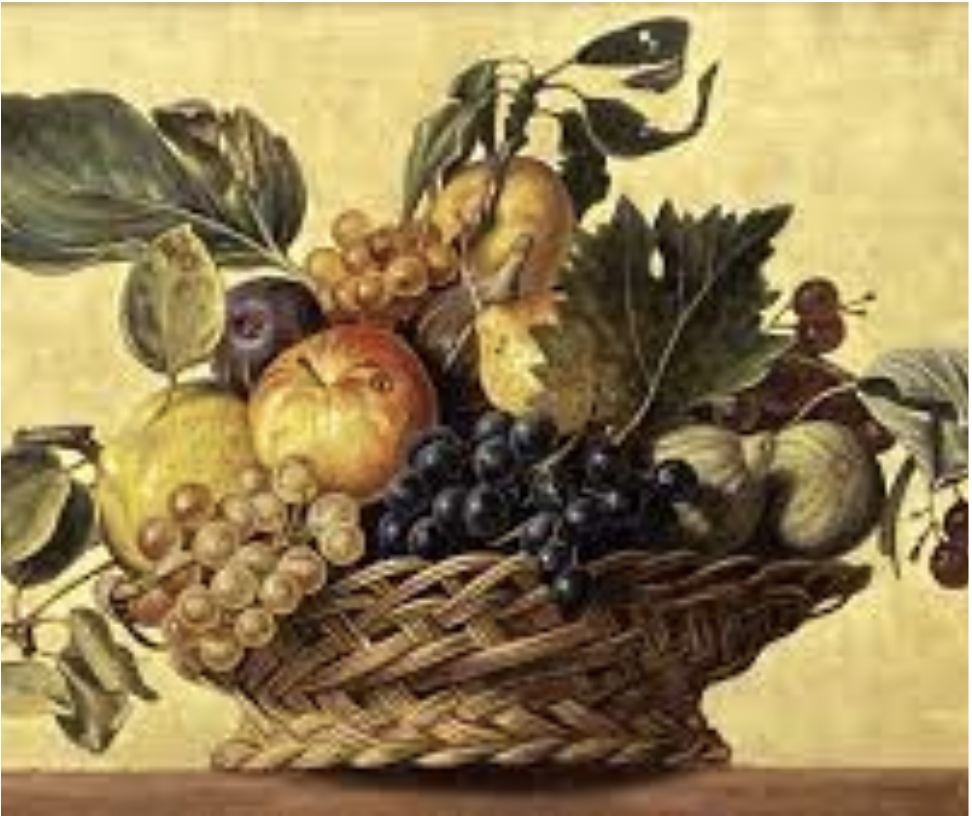
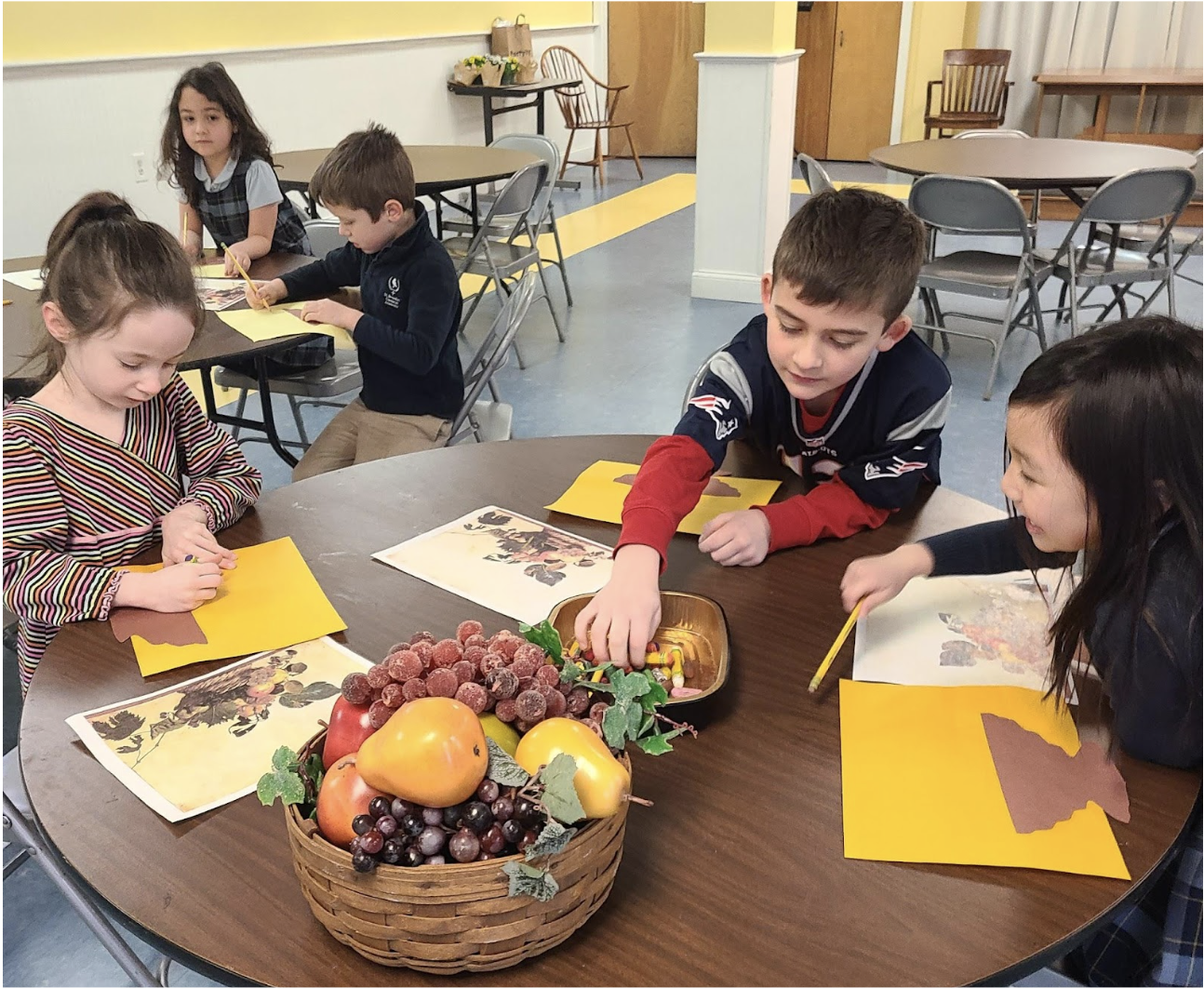
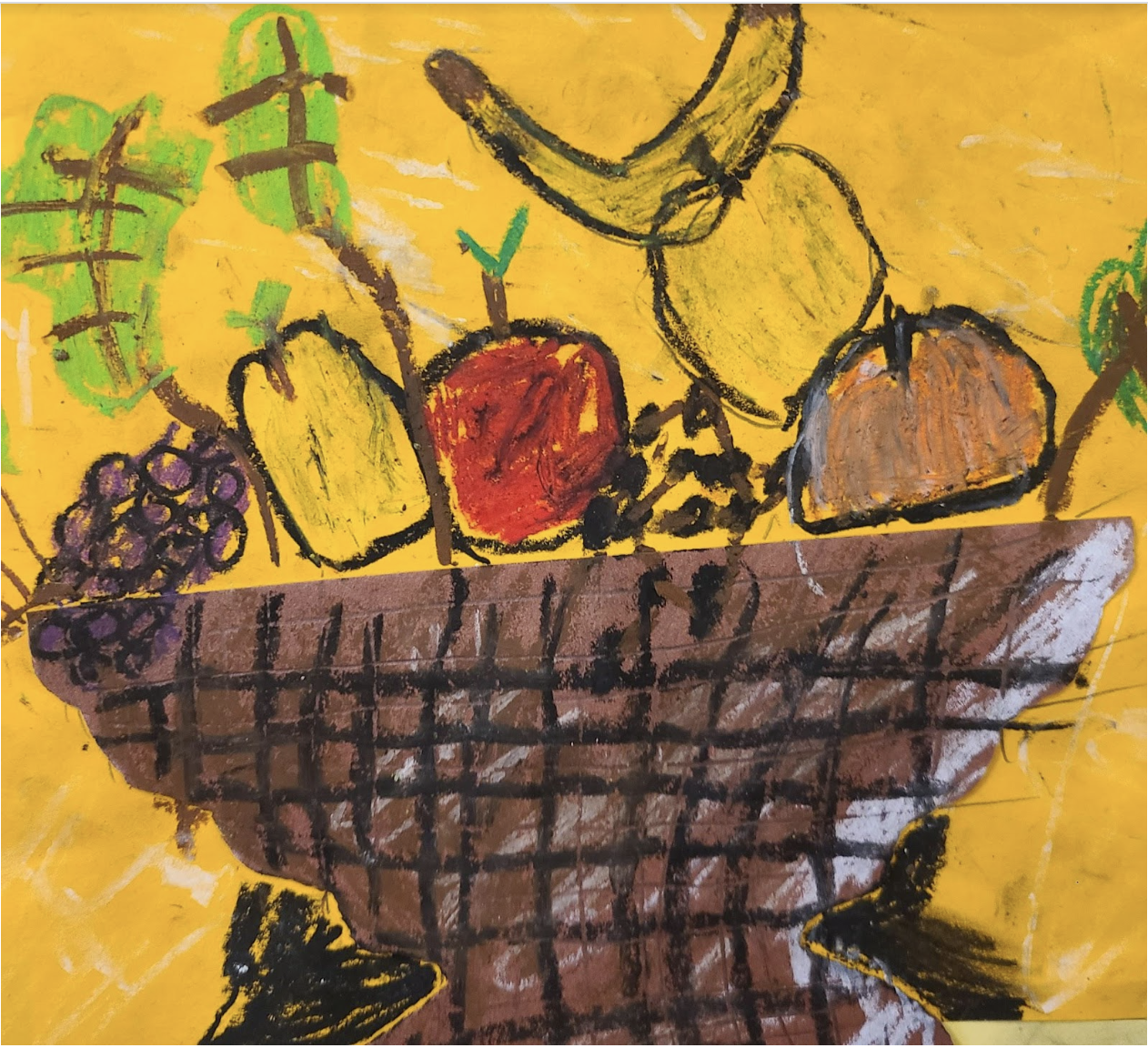
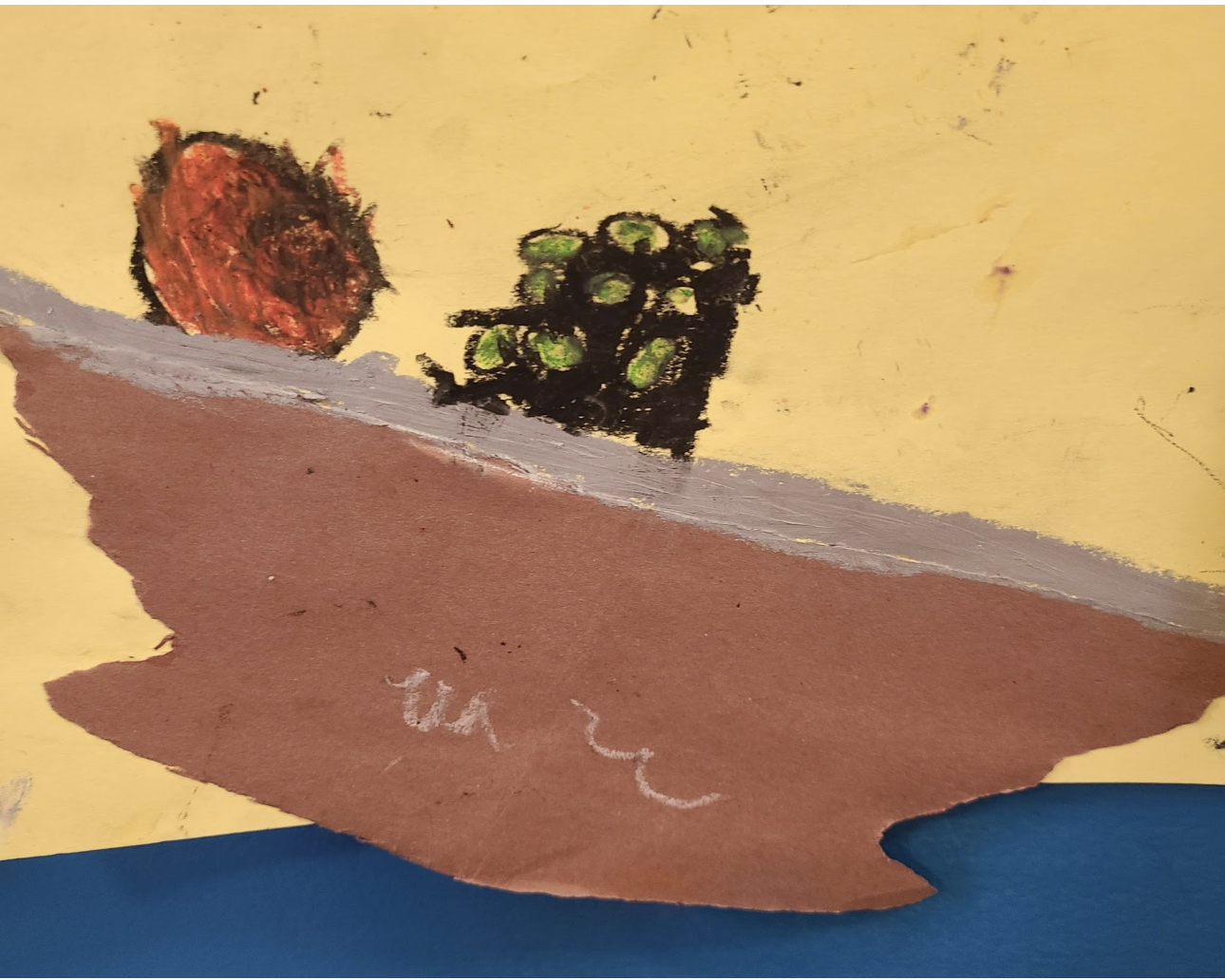
Every summer the search for artists to include in SBCA’s artist of the month line-up begins. Michelangelo Merisi da Caravaggio makes the list almost every year. In my opinion, he is the best choice and a solid standout in the Baroque era. My hope is that the students at SBCA will tell you why.
Caravaggio dominates February as our artist of the month because of his compelling compositions that capture dramatic moments. He is a minimalist who controls what the focus should be. Spare scenes with dramatic illumination or tenebrism set the stage for the miracles unfolding on canvas. Remarkably, we are invited to take part in these scenes.
We are there when Judas kisses Jesus in The Taking of Christ. The highly polished armor in the center suggests a mirror, reminding us that we too are a part of what is happening here.
We have a place at the table in The Supper at Emmaus when Luke and Cleopas are stunned to discover that the stranger who joins them is Jesus.
In The Calling of St. Matthew, we may feel like we just stepped into the grimy, dimly lit backroom as Matthew points to himself in disbelief when Jesus and Peter walk in calling him into a new life.
Our sense of balance is thrown off in The Conversion of St. Paul, echoing how abruptly Saul’s life has been transformed. Saul lays splayed, falling out of the canvas. We have an intimate view of his strangely peaceful face. Is it because he is hearing the voice of Jesus?
Caravaggio’s unique approach to arranging these scenes urges our participation. Even a still-life painting of a basket of fruit may leave us wanting to push it back as it looks in danger of falling off the table’s edge.
Caravaggio used models from the streets of Rome. They were average joes looking a bit dirty and disheveled. You will not find heavenly clouds, billowing robes or halos on perfect people in his work. Caravaggio gives us “everyday life when suddenly…..” flashes that we can imagine ourselves having.
Caravaggio’s paintings supply us with much to notice and reflect on. Subtly, a window pane can evoke a cross, a shadow a fish tale, and eyeglasses leave a tax collector unable to see. In fact, many paintings include a figure who seems unaware of the miracle taking place or the presence of Christ. This is always a great talking point in class. How often in our daily lives are we that person not paying attention to how Jesus has entered our lives?
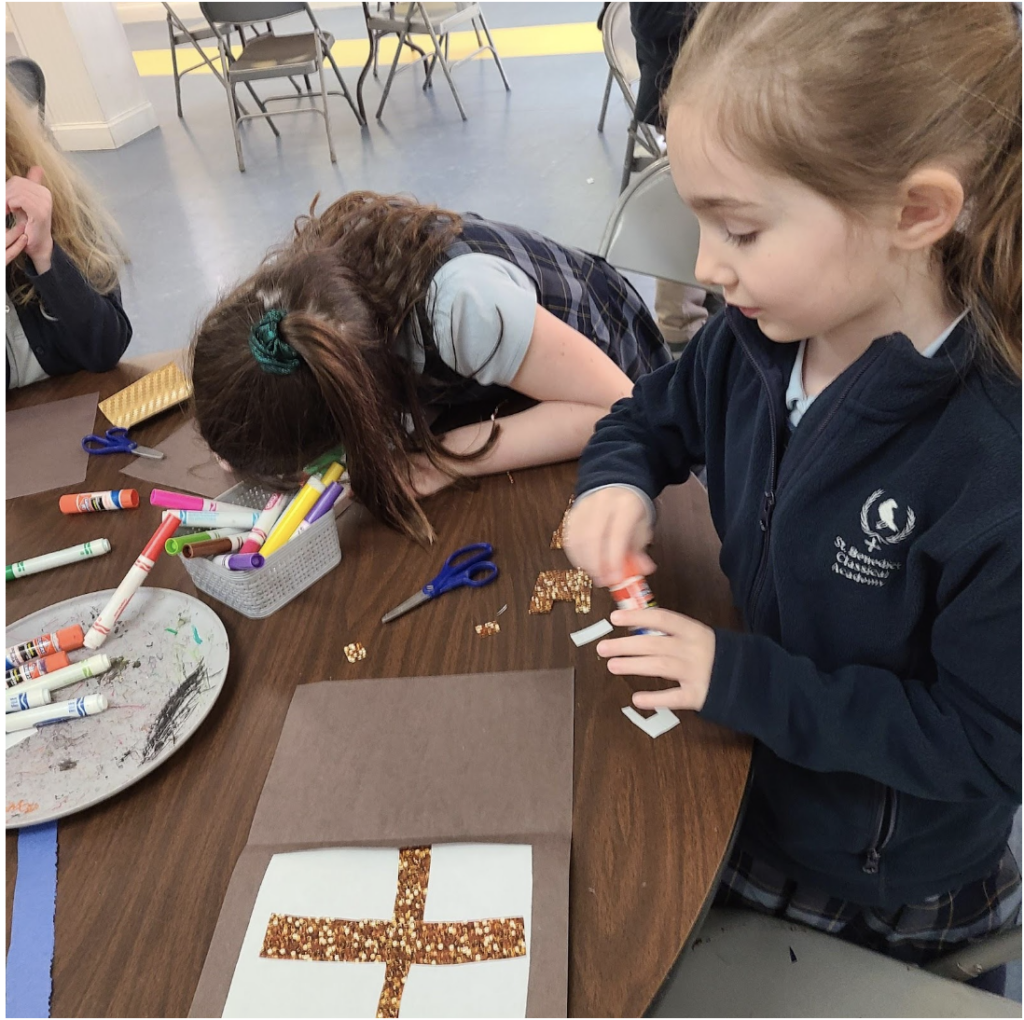
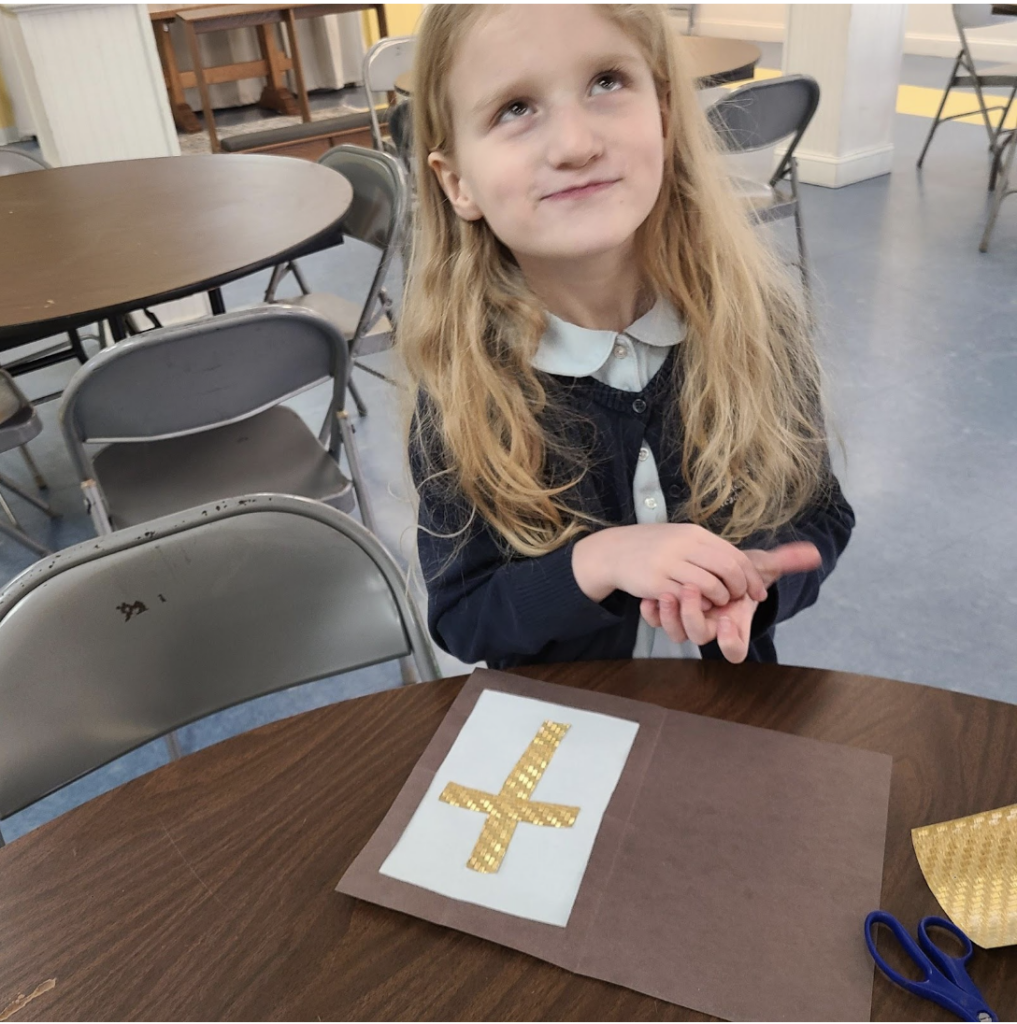
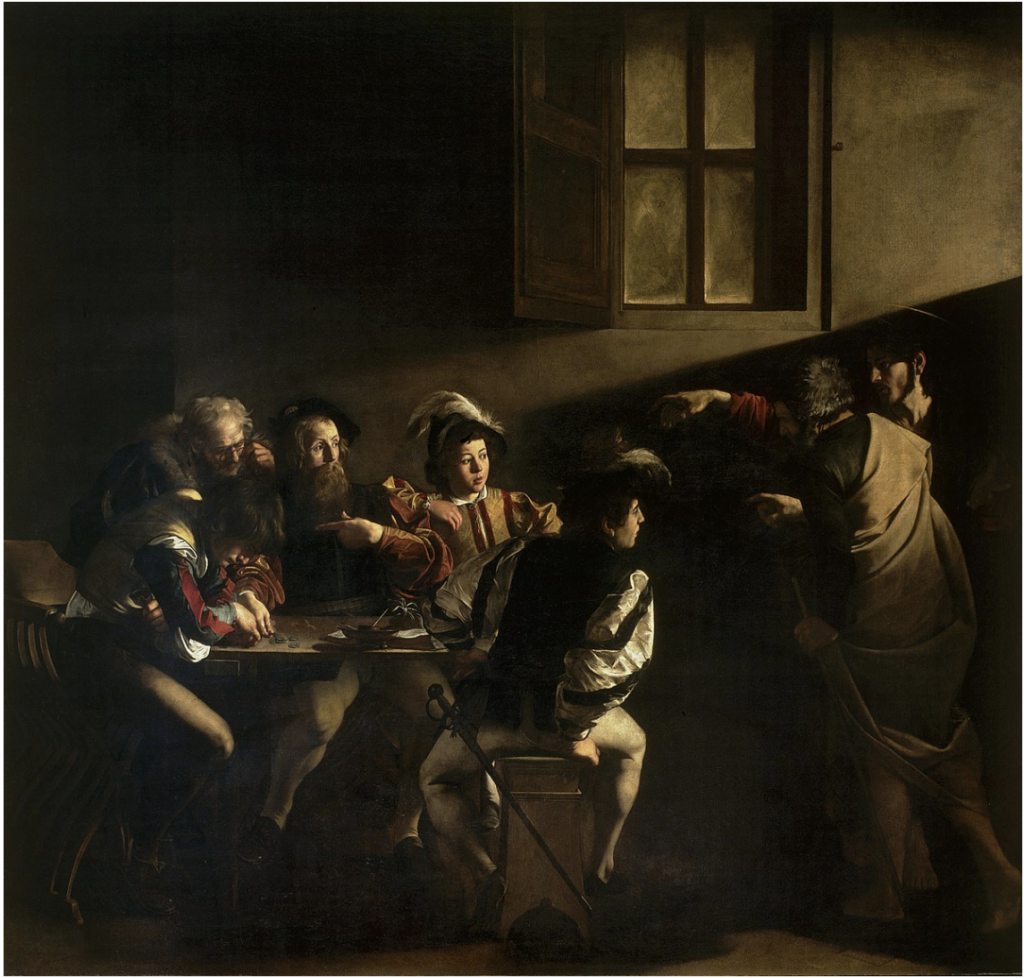
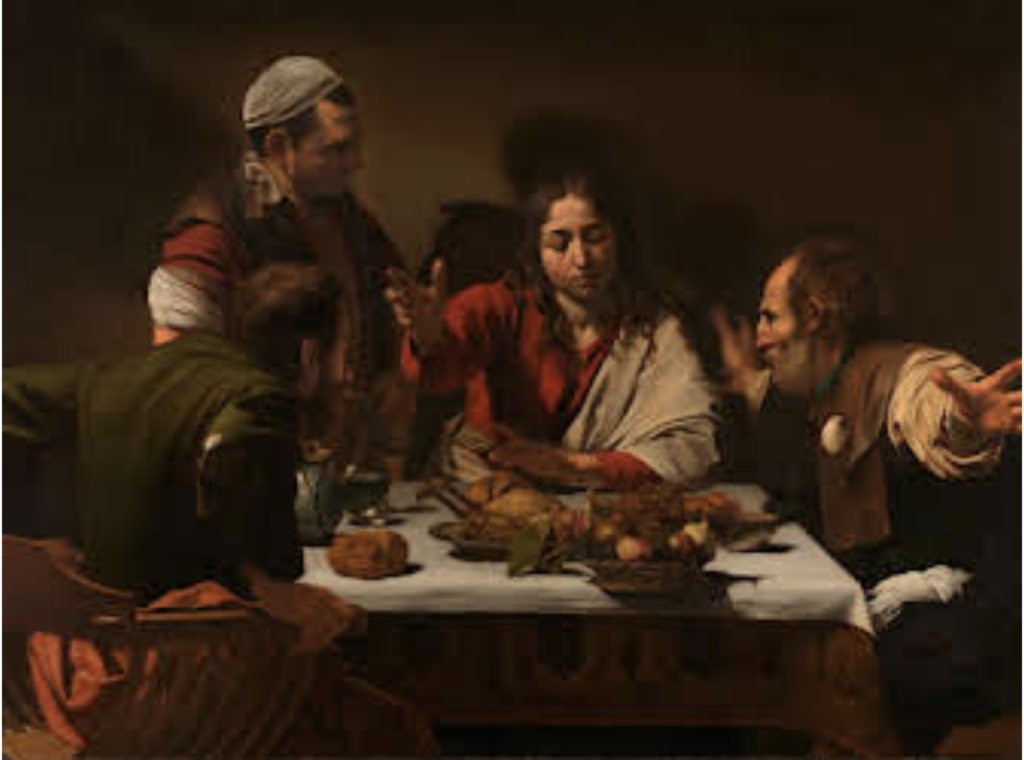
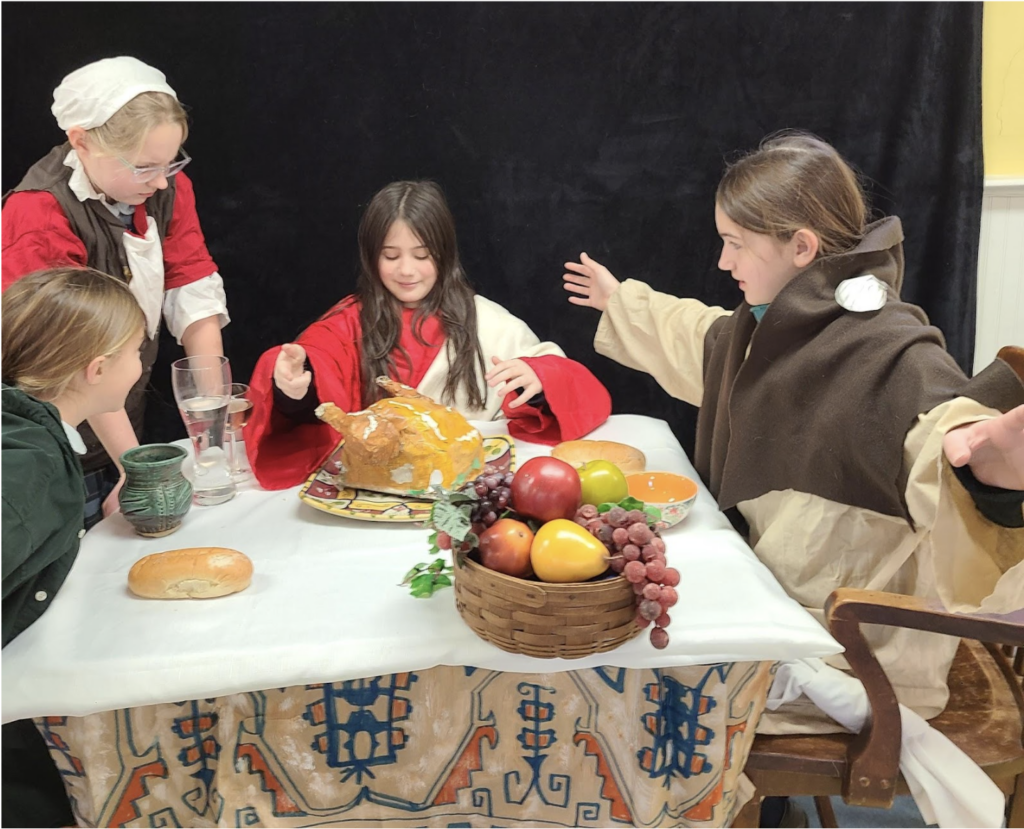
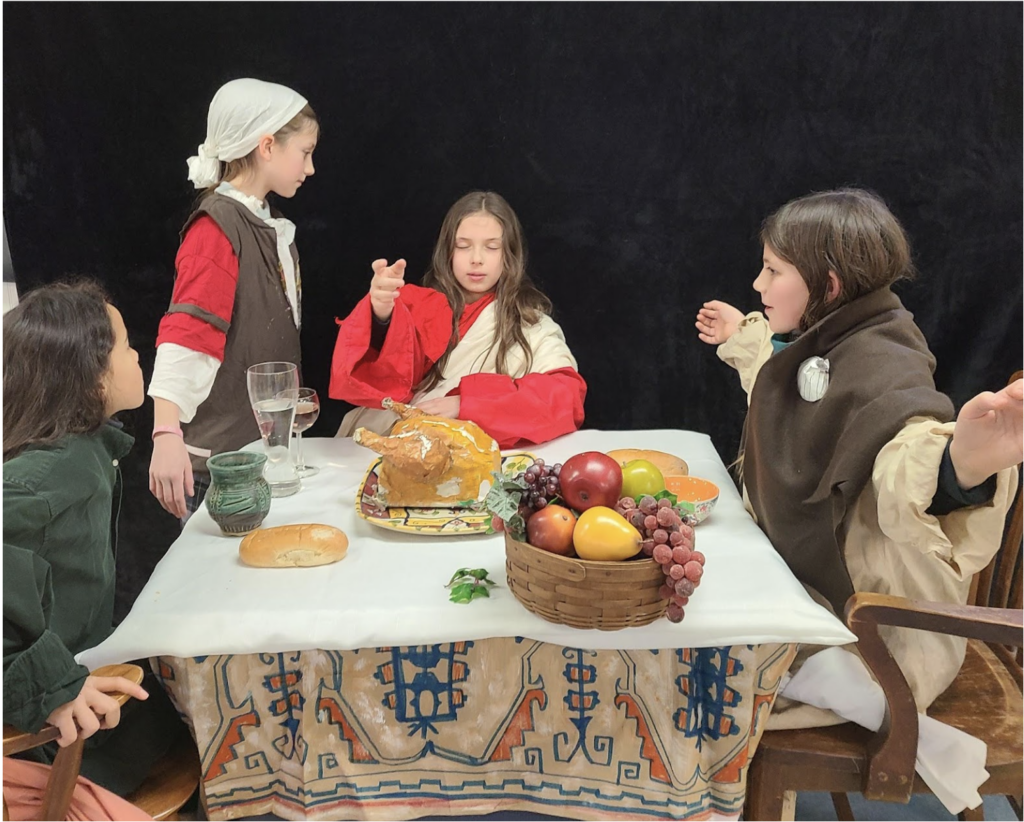
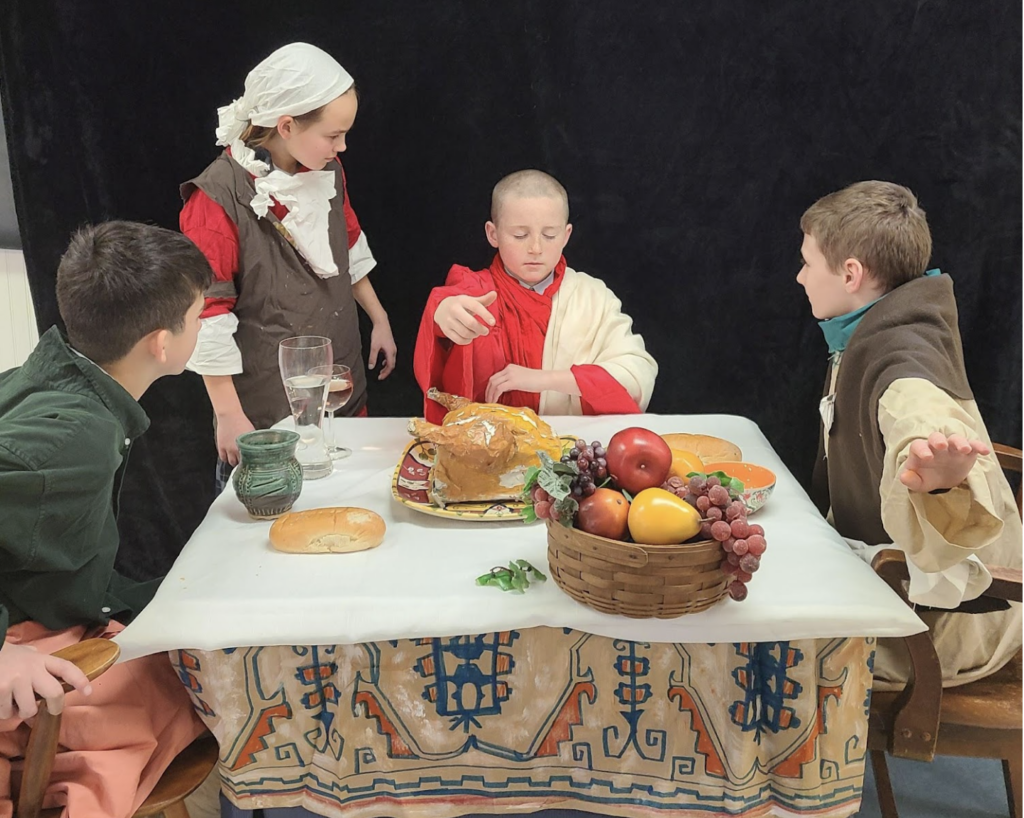
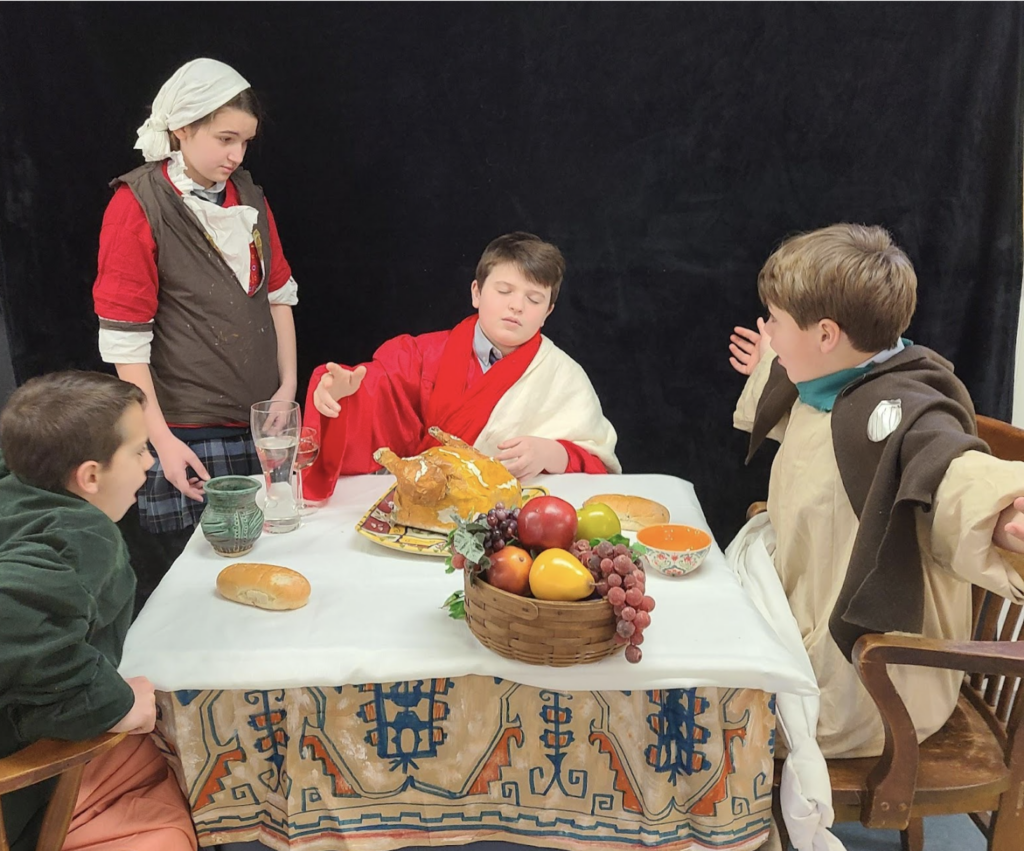
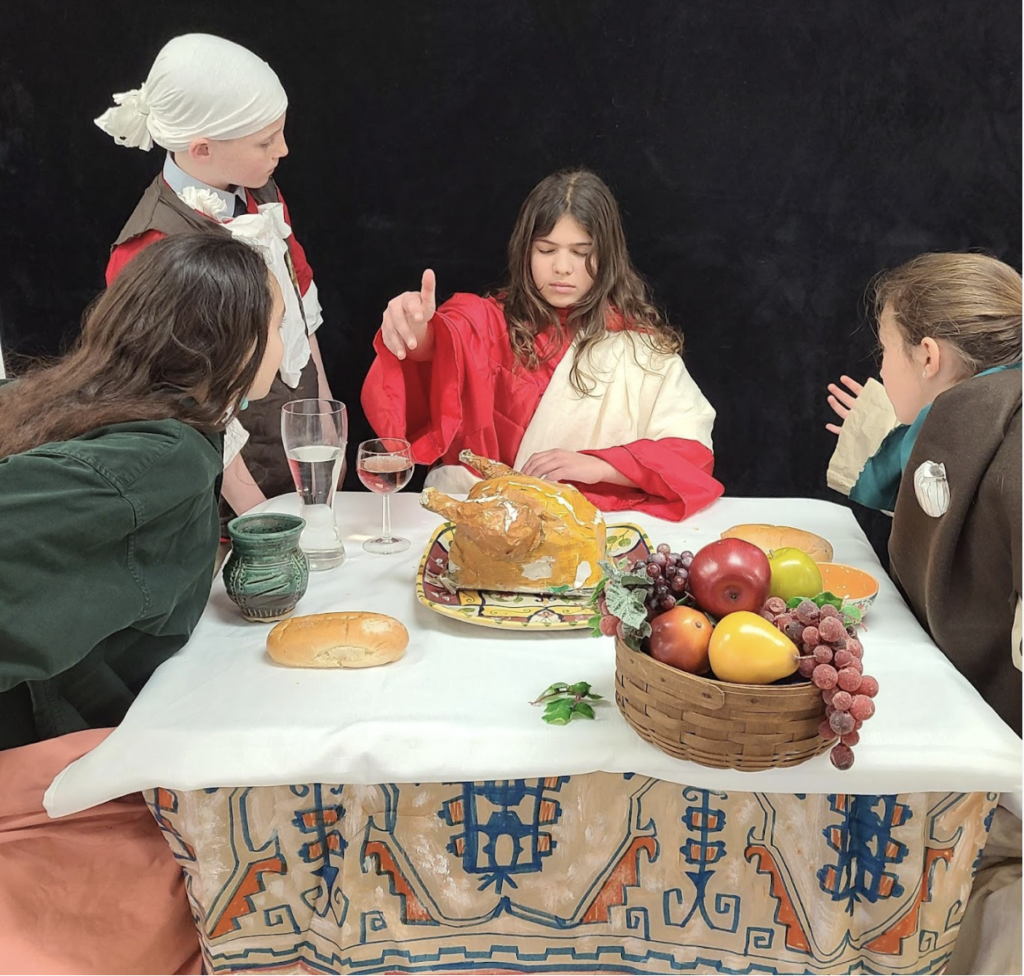
February was jam-packed with Caravaggio discussions and projects. Younger students placed oil pastel fruit basket drawings on the edge. They also made windows containing collaged crosses. Third-grade artists cut black paper shadows out with characters for scenes demonstrating tenebrism. Fifth-grade artists set the table and posed for The Supper at Emmaus photo shoot.
We also imagined attending a talk on Carravaggio at a great hall. We get word that the specialist on Caravaggio canceled at the last minute. Suddenly, there is a call out to the audience “Is there a Caravaggio expert in the house?”. Students came up “on stage” as experts to talk about interesting details from the paintings we covered.
The last week of Caravaggio included a skit that dramatized the rediscovery of a painting thought lost. The Taking of Christ (1602) was found in August 1990, hanging above the mantle in the house of the Jesuit Fathers in Dublin. It stars Father Noel Barber, who sent the painting out to be cleaned. Another player in our drama is an ecstatic Sergio Benedetti, senior conservator in the National Gallery of Ireland. He breathlessly delivers the spectacular news that The Taking of Christ is not a copy, but, in fact, the original painting by Caravaggio.
If you need more information on SBCA’s artist of the month, just ask your expert at home.
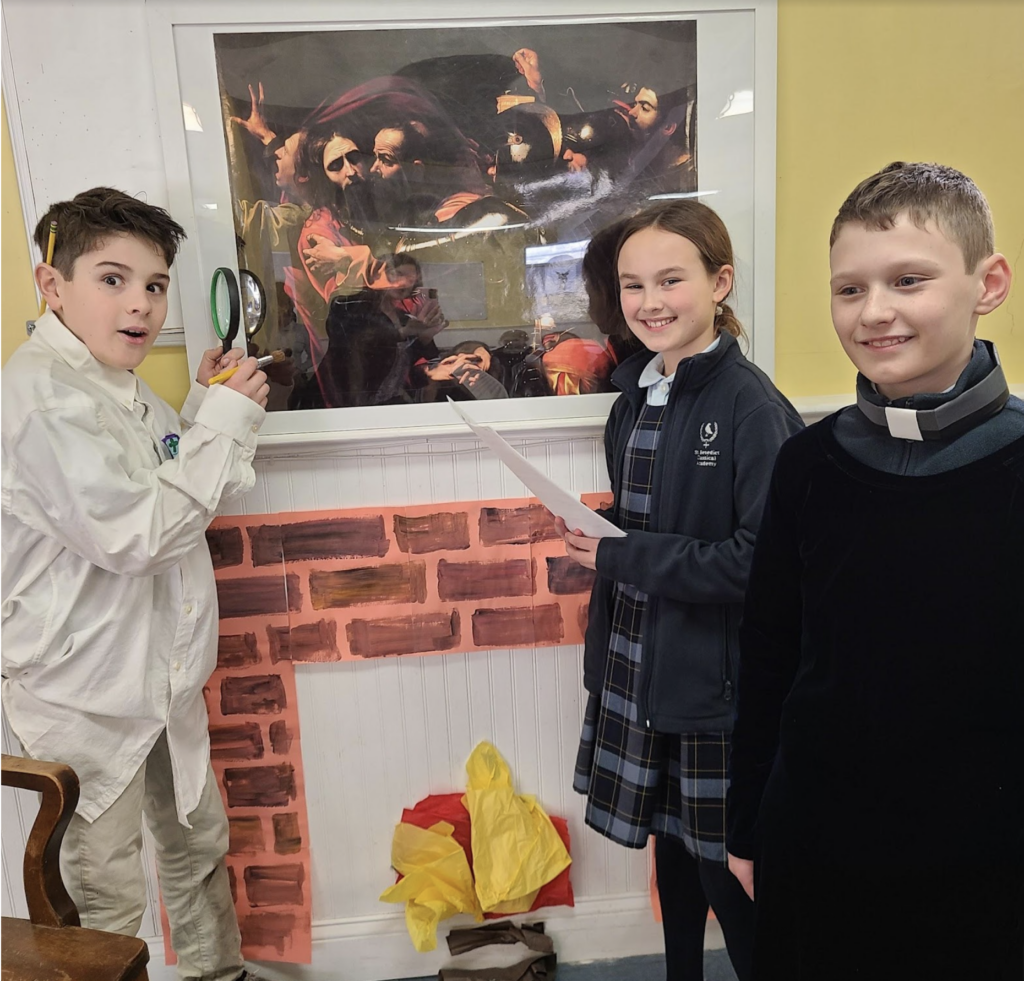
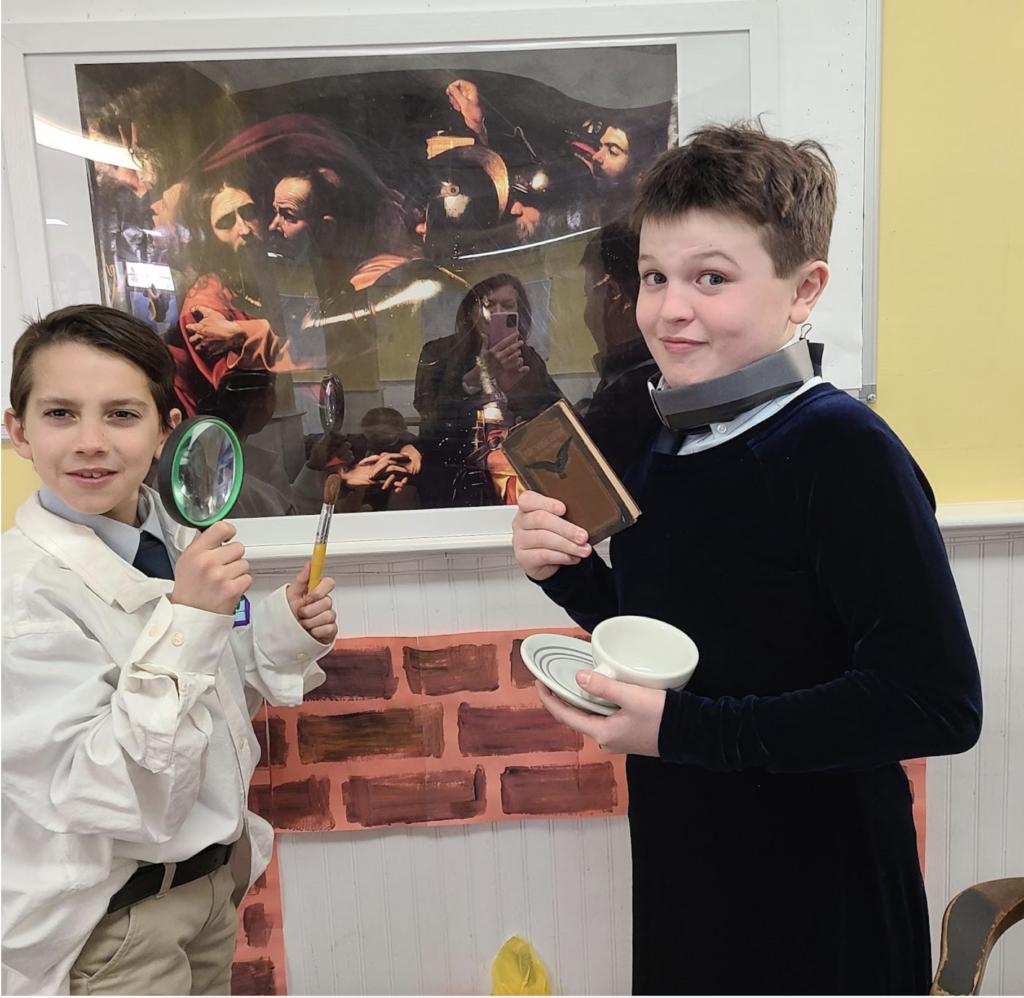
AUTHOR: Jane Bleakley, Art Teacher
[learn_press_profile]
